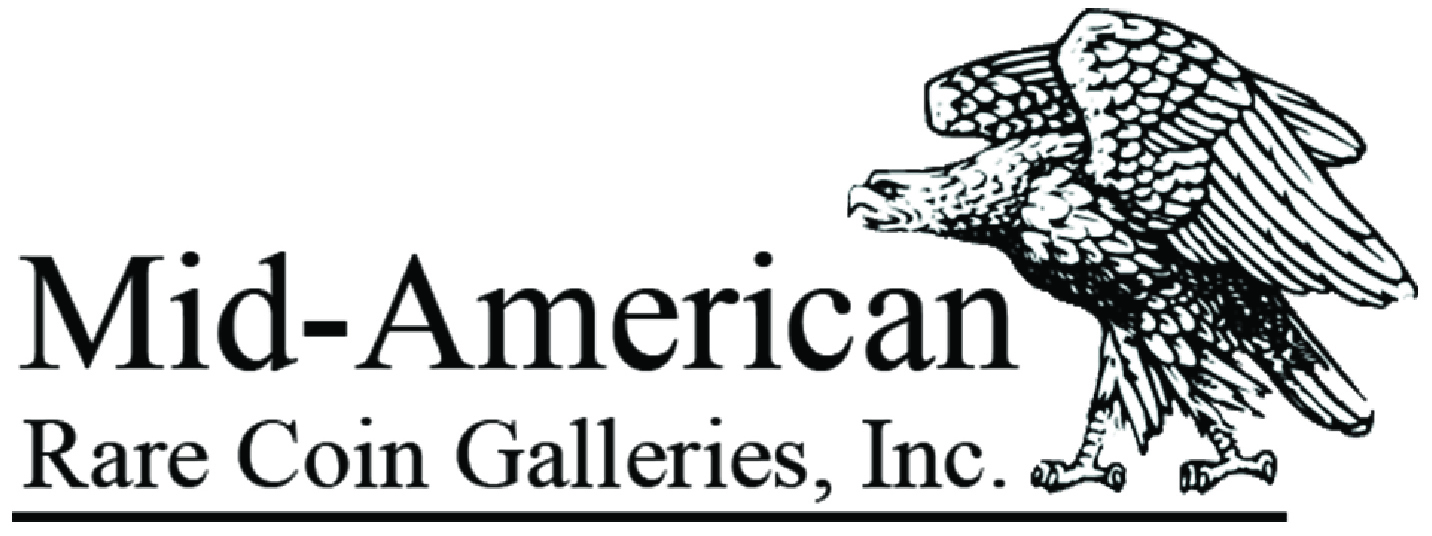In Part I, I began a date-by-date analysis of the very popular Indian Head Half Eagle series. This week, we conclude the series by examining those coins struck from 1911 to 1929.
There are some real “killers” in this series, but it is a doable project for ambitious collectors – especially in grades below Mint State. There are no million-dollar showstoppers that would make collecting Indian Head Half Eagles impossible. I believe the series offers great value and should be studied carefully by anyone interested in US gold coinage.
The recent hoards of US gold coins coming onto the market have provided a fresh supply of many previously scarce dates. Nearly all of the coins seen so far are circulated, but some issues have been found in MS 61 to MS 63. A complete study of population reports from a decade ago would be very revealing and may be the subject of an upcoming article.
1911
- Mintage: 915,000
This date is one of the more readily available of the Philadelphia Mint issues in most grades. Mint State examples can be found with little effort. The average coin for this issue is not particularly well-struck, and the luster can range from average to exceptional. As is the case with many coins of this series, Gem examples are scarce, with only around 50 coins having been certified as MS 65 or higher by NGC. The coins trade for about that of the most common dates of the series and are a great value if one can be found. Superb examples are virtually non-existent. NGC has graded two coins as MS 66, one of which was last sold at a public auction for $18,000 USD in October 2019.
1911-D
- Mintage: 72,500
The 1911-D Half Eagle ranks as one of the great coins of the series and is extremely undervalued at current levels. Like its cousin, the 1911-D Quarter Eagle, the mintage is one of the lowest for the issue. It is, however, rarer than the Quarter Eagle in all grades, especially Mint State. Finding an uncirculated 1911-D Half Eagle will present a challenge for any collector. The price for this issue jumps considerably at every grade point, and many coins have been sent in multiple times for the maximum grade. Therefore, the population reports should be viewed with the knowledge that not all old certificates have been returned and the date is rarer than the reports indicate.
Unlike the Quarter Eagle of this year and mint, the mintmark is usually clearly defined and not an issue. In fact, most examples I have examined were well-struck in all respects. Anything approaching Choice or Gem should be considered a major rarity and highly coveted. Just three of four coins are known at the Gem level, and none have been certified as MS 66. The Smithsonian Collection contains one of the finest known examples for the issue and would certainly qualify as Gem MS 65 or better.

1911-S
- Mintage: 1,416,000
Despite a large mintage, this issue is actually quite scarce in Mint State. This issue saw wide circulation, and most coins are well worn. The date brings a tiny premium in the circulated grades but climbs steadily in the uncirculated grades. Several years ago, a small hoard of this date surfaced in a Florida estate auction. I had the privilege of purchasing most of the coins and selling them to national dealers.
The hoard contained approximately 125 coins and is a testament to the popularity of the series; it sold out in less than a week. They are now widely distributed and rarely surface. Most of the coins in this hoard are graded MS 61 to MS 63; none approached Gem condition. In Choice or Gem condition, the 1911-S Half Eagle is rarely seen. Just four coins have been certified as MS 65 by NGC. The last one sold at auction in 2019 for $21,600.
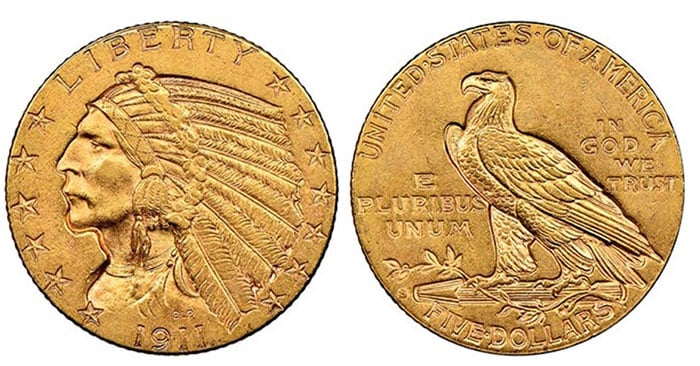
1912
- Mintage: 790,000
With a similar mintage to the 1911 Philadelphia issue, the 1912 is about the same rarity in most grades. Average Mint State coins are easy to locate and usually display excellent luster and eye appeal. Some coins seen have minimal bag marks with radiant, yellow gold color. Caution should be used when buying this date, as I have seen some incredibly deceptive counterfeits. Purchasing only certified coins is highly recommended. Gem examples are rare, but with 45 or so coins certified by NGC, they do show up quite often. There have been three coins graded as MS 66, and one last sold at auction in 2018 for $18,000.
1912-S
- Mintage: 392,000
The 1912-S Half Eagle is one of the classic “condition rarities” for the series. Despite a moderately high mintage, the issue is quite scarce in all grades. Most are poorly struck, with an ill-defined mintmark. Even in Gem condition, the very few examples known in that grade have an unimpressive appearance. Over the years, many important collections had to settle for either a circulated or a low-range Mint State example — John J. Pittman being a prime example.
Any Gem condition example of this date would be considered a major, six-figure rarity. NGC has certified a single coin as MS 65, which sold for $102,000 in 2018. Interestingly, the Smithsonian Collection contains a Gem example of the issue, and it was probably acquired from the United States Mint at the time of issue.
1913
- Mintage: 915,901
The 1913 Half Eagle is very similar in rarity to the other Philadelphia Mint issues of this era. The coins were minted in ample quantity and finding an example in all grades up to MS 64 is quite easy. Most seen are well struck with a nice luster. Gem examples are represented by only 48 coins that have been certified by NGC. When these are offered, the coins usually sell for the same price as most common series’ dates (around $10,000) and represent a wonderful value.
NGC has certified five coins as MS 66, but none have appeared at public auction. This could mean that a single coin had been submitted multiple times, and the rarity is distorted in the population report. I have not seen an example that would grade MS 66.
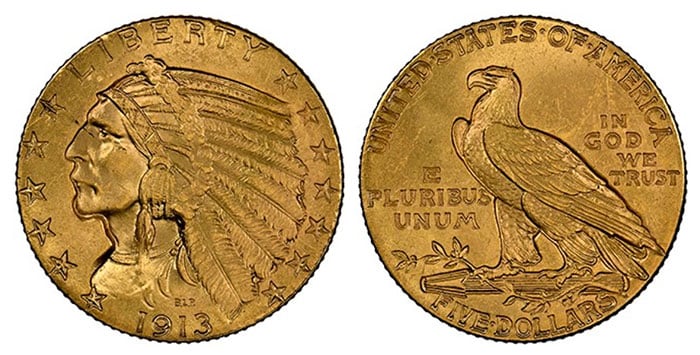
1913-S
- Mintage: 408,000
The 1913-S is rarer than its mintage would suggest. Considering the date and mint, the 1913-S Indian Head Half Eagle is frequently found with an average or worse strike, often with peripheral weakness. The mintmark is normally quite mushy and lacking any central definition. A rare exception can be found with sharpness and luster throughout. In Gem MS 65 or finer grades, this date is one of the most difficult to secure. NGC has certified only one example as MS 65 and two as MS 66. Any Mint State example of this date should be considered extremely desirable and an easy sell. It should be noted that the retail catalog prices for this date in Mint State are quite low and do not reflect the true market for the issue.
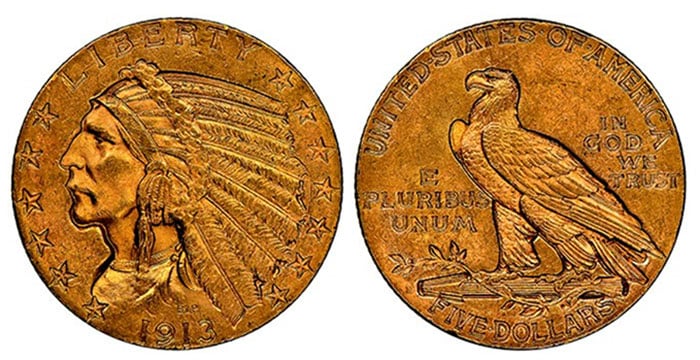
1914
- Mintage: 247,000
As can be seen from the lower mintage, this issue is somewhat rarer than other Philadelphia Mint issues of the time period. In the lower grades of Mint State, the coin is considered common by most measures. The average coin is well-struck and lustrous in correspondence to the grade. Choice and Gem examples are quite rare, with survival numbers roughly half of the 1909 to 1913 Philadelphia issues. NGC has graded just one example as MS 66, and it has not been traded at auction in recent years.
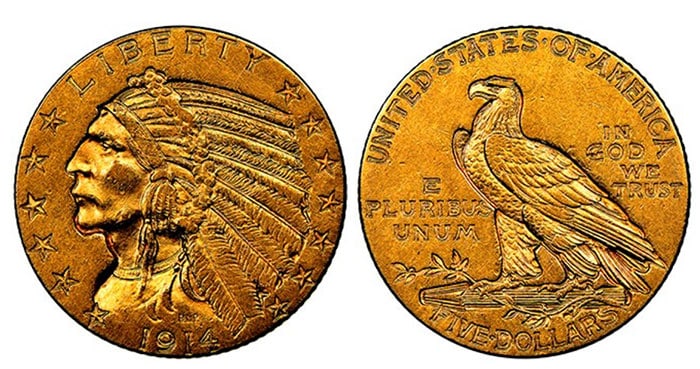
1914-D
- Mintage: 247,000
With an identical mintage, it is no surprise that the rarity of the Denver Mint and the Philadelphia issue is very similar. The date is readily available in all grades up to Choice MS 64. Gem examples are seldom seen and bring a healthy premium when offered. Most seen are well struck, with acceptable luster. A single coin has been certified as MS 66 by NGC but has not crossed the auction block.
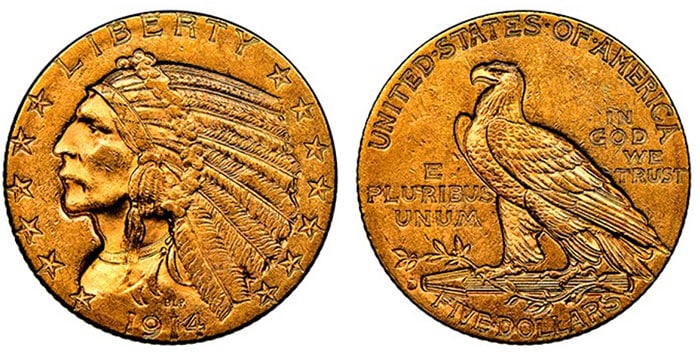
1914-S
- Mintage: 263,000
The 1914-S Half Eagle has long been recognized as a significant condition rarity. I remember selling a coin in the 1980s that I had purchased from a San Francisco dealer. The coin was sold to Harry Bass for the huge sum of around $5,000. I can’t remember if the coin would classify as Gem condition by today’s standards, but it was clearly the best this legendary collector had encountered. Small groups of this date have been found over the years in the lower levels of Mint State and are usually available with modest effort. NGC has certified just two coins as MS 65, one of which sold for $80,500 in 2005. I wonder if that is the coin that I sold Harry!
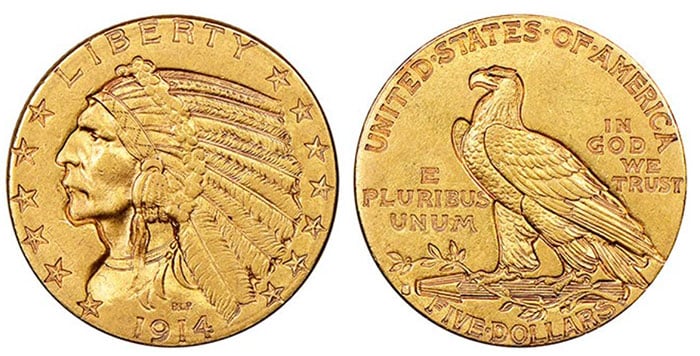
1915
- Mintage: 588,000
The 1915 Half Eagle is one of the most seen issues in Mint State for the series. Most are well-struck, and the luster is not an issue. Gem examples are represented by just 42 coins at NGC, with none above that level. When offered, the date usually sells for that of a common issue and is an excellent value, in my opinion.
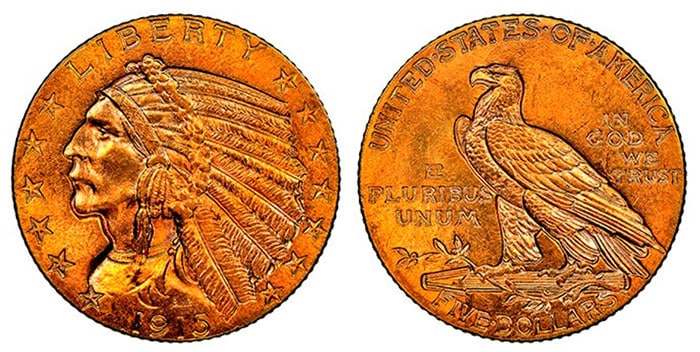
1915-S
- Mintage: 164,000
The 1915-S Half Eagle is of nearly identical rarity to the 1914-S at the highest levels of Mint State. It is, however, much rarer in all grades of Mint State. I have seen several small groups of AU 58 examples from recent hoards offered. Mint State 1915-S Half Eagles remain extremely desirable. Many great collections have lacked a Choice example. For instance, the Smithsonian has a single coin that grades AU at best. NGC has graded just one coin as MS 65, which last sold for $42,500 in December of 2000. That was the bargain of the century!
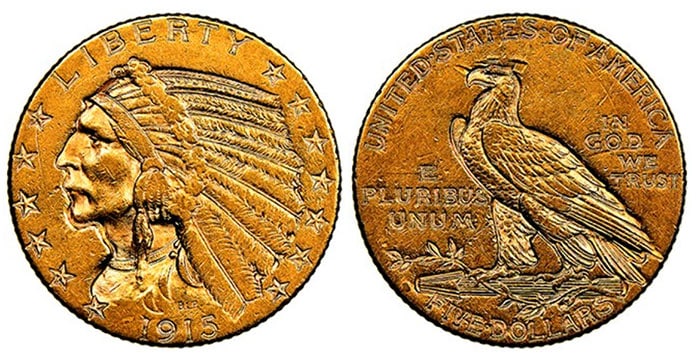
1916-S
- Mintage: 240,000
With a moderately low mintage, the 1916-S Half Eagle is scarce in most grades. The Virgil Brand estate contained a few hundred examples, most in the MS 61 to MS 64 grades. This is another date that has surfaced in the last couple of years in quantity, most of which we have seen graded AU 58. Recent examination of the NGC Population Report shows around 14 coins are certified by NGC as Gem. The finest example I have seen for the date is a Superb MS 66 coin that resides in the Smithsonian Collection. It interesting that the Smithsonian has hits and misses for examples of this series.

1929
- Mintage: 662,000
Unlike the Quarter Eagles for this year, most 1929 Half Eagles remained in the vaults of the United States Treasury until they were melted in the 1930s. The 1929 Half Eagle is rare in all grades and very difficult to locate. When offered, be prepared to pay handsomely to acquire an example. Most of the coins seen have heavy bag marks, and just a few have been certified as Gem. The 1929 is considered the key to the series and will always be very popular. Similar to its Double Eagle cousins for the same year, this issue is seldom seen in circulated conditions. Most lower-grade examples are problem Mint State coins. The 1929 Half Eagle is one of the most sought-after coins struck in the 20th century.
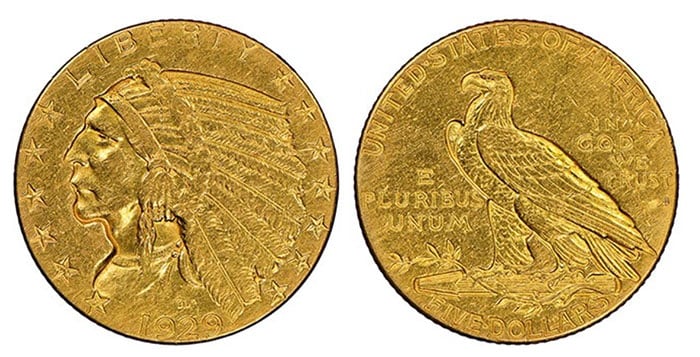
Collecting any series of US gold coins is challenging both financially and time-wise. Indian Head Half Eagles can be found in the lower grades, especially with the distribution of recent gold hoards from Europe. High-grade examples remain rare, and the population numbers for these have changed little in recent years. The period from 1908 to 1929 is a fascinating time in American history. The pursuit of coins from this time will be a fun exercise if you have the resources.
